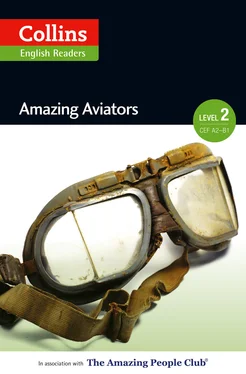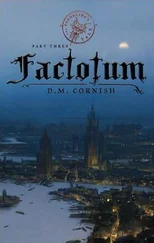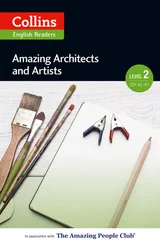So, a machine could fly! We already knew that, but most of the people at the demonstration were amazed. News of our success moved faster than the balloon travelled. Soon, Étienne went to Paris to demonstrate our invention there. I was always a shy person and I decided to stay at home.

11 thSeptember was the date of Étienne’s first demonstration in the French capital city. Jean-Baptiste Réveillon, another man whose company made and sold paper, helped my brother to make the new balloon. The flight started in Reveillon’s garden. This balloon had a name – it was called Aérostat Réveillon . The signs of the zodiac were painted on it. Everyone thought that it looked wonderful.

On that occasion, the king, Louis the Sixteenth, had told Étienne that two criminals could fly in the basket – the compartment for passengers at the bottom of the balloon. We wanted to test the effects of flight on living things, because we wanted our balloons to carry men and women in the future. But Étienne said that criminals didn’t deserve the honour.
However, a week after that flight, another flight took place at the Royal Palace in Versailles. This time, a sheep, a duck and a chicken were in the basket. The date was 19 thSeptember, and a huge crowd came to watch the flight. King Louis and Queen Marie-Antoinette themselves were there, and again the flight was successful. This time, the balloon travelled about three kilometres in eight minutes. It flew at about 500 metres above the ground. None of the animals was hurt.
Immediately, Étienne built a huge new balloon which held 1,700 cubic metres of air. It was about 24 metres high, and about 16 metres wide. The king’s face, as well as the zodiac signs, was painted on this balloon. On 15 thOctober, in this balloon, my brother became the first human to ascend into the air. It was a tethered flight – the balloon was tied to the ground with a very long rope. This was because we still needed a way to control the balloon’s direction of flight.
Later that same day, another man ascended in the machine. He was called Jean-François Pilâtre de Rozier, and after that day he flew in Étienne’s balloons on a number of occasions.
Soon, Étienne decided that the tether-rope wasn’t necessary. The balloon could fly untethered in future. On 21 stNovember, the marquis d’Arlandes – who was a famous soldier – and monsieur Pilâtre de Rozier made the first untethered flight. Monsieur de Rozier controlled the balloon’s direction on that day. So you could say that he was the world’s first pilot! The two men flew over Paris. They reached an altitude of 900 metres and they stayed in the air for 25 minutes. Parisians were amazed to see the balloon sailing across the sky.
That flight had a moment of danger. A piece of hot wood jumped from the fire and started to burn the cloth. The pilot had to land the balloon quickly. But no one was hurt and everyone was happy that the two aviators had returned safely to Earth.

Much more work was needed to improve the balloons. Étienne and I made many more experiments. The Académie des Sciences recognized our achievements. However, our work was interrupted by the French Revolution.
In 1789, the streets of Paris were dangerous places, especially for the rich people. Survival in the streets became more important than survival in the air, so we stopped flying. But we’d shown that human flight was possible. We’d changed the way people thought about travel.
Soon after our machines first flew, other inventors started to make balloons which were filled with hydrogen, not hot air. Hydrogen, a gas which had recently been discovered, was lighter than air. It didn’t need to be heated. But balloons continued to be people’s only way of flying, long after my own death on 26 thJune 1810. It was almost a hundred years later when a different kind of flying machine moved the history of aviation forward again.
The Life of Joseph Montgolfier
| 1740 |
Joseph-Michel Montgolfier was born in Annonay, Ardèche, France. He was the twelfth child of 16 born to his parents. The Montgolfier family were paper-makers. |
| 1745 |
Joseph’s brother Jacques-Étienne (always called Étienne) was born. |
| 1760 |
Joseph completed his education and began to work in the family’s paper-making business. |
| 1772 |
Étienne, Joseph’s brother, returned from Paris where he had studied architecture. He managed the family business after the death of their older brother. |
| 1777 |
Joseph began to talk about ideas for a flying machine with Étienne. He thought that a machine could fly with the help of hot air. |
| 1782 |
While living in Avignon, Joseph began building the first hot-air balloon. When his brother joined him in the work, they built a larger balloon which flew two kilometres. |
| 1783 |
In Annonay the brothers made the first public demonstration of their hot-air balloon. The flight was a success and the balloon flew two kilometres in ten minutes. Next, they made another hot-air balloon called the Aérostat Réveillon. Its first flight was successful and soon there was another demonstration at the Royal Palace of Versailles. King Louis XVI and Queen Marie-Antoinette watched as the balloon ascended. A month later, Étienne made the first successful human flight in a tethered balloon. |
| 1789–1799 |
The French Revolution ended the Montgolfier brothers’ work on balloons for several years. Joseph and Étienne returned to the family paper-making business. But after the Revolution they continued their work on inventions. Soon, hot-air balloons were replaced by hydrogen balloons. But Joseph invented several important machines of other kinds. |
| 1810 |
Joseph died aged 69, in Balaruc-les-Bains. |

the first person to cross the sea in an aeroplane

I was the first person to cross the sea from France to England in a heavier-than-air flying machine.

I was born in the town of Cambrai, in France, on 1 stJuly 1872. I went to school in my home town, then in Amiens, and finally in Paris. As a boy, I was especially good at drawing. My ambition was to become an engineer.
When I left the famous École Centrale in Paris, I had to join the French Army. All young men had to do some military service at that time, and I was a soldier for a year. After that, I took a job with an engineering company in Paris. While I was working there, I invented something new. It was a practical kind of headlamp for the first cars which were appearing in France at that time.
Конец ознакомительного фрагмента.
Читать дальше















